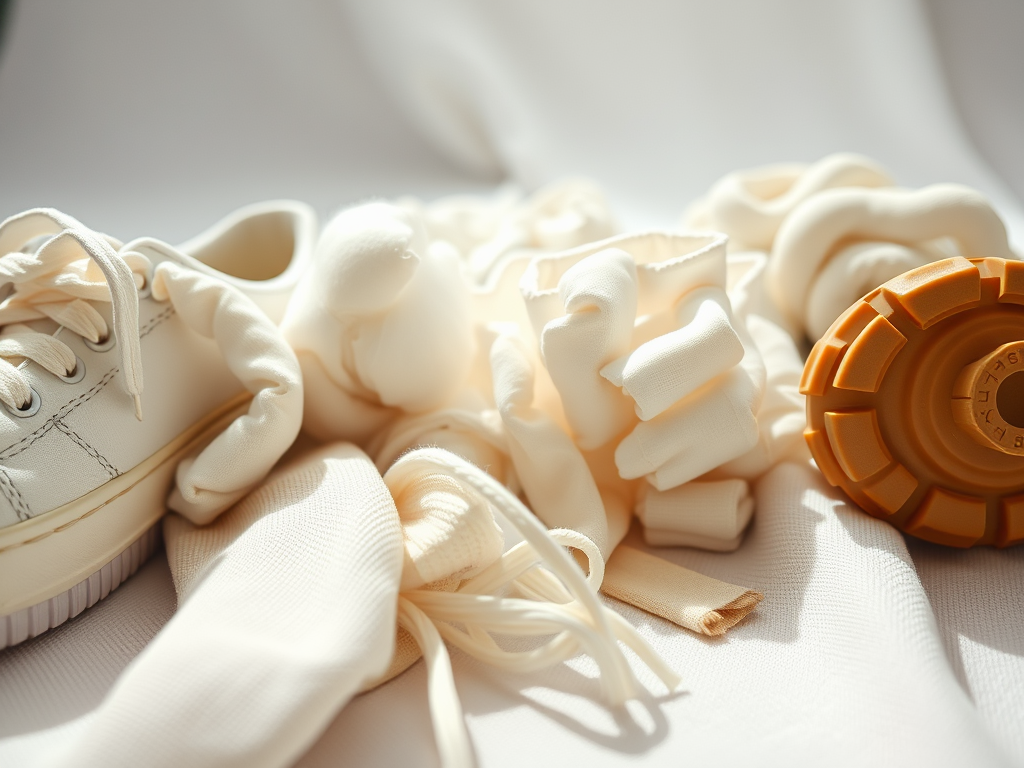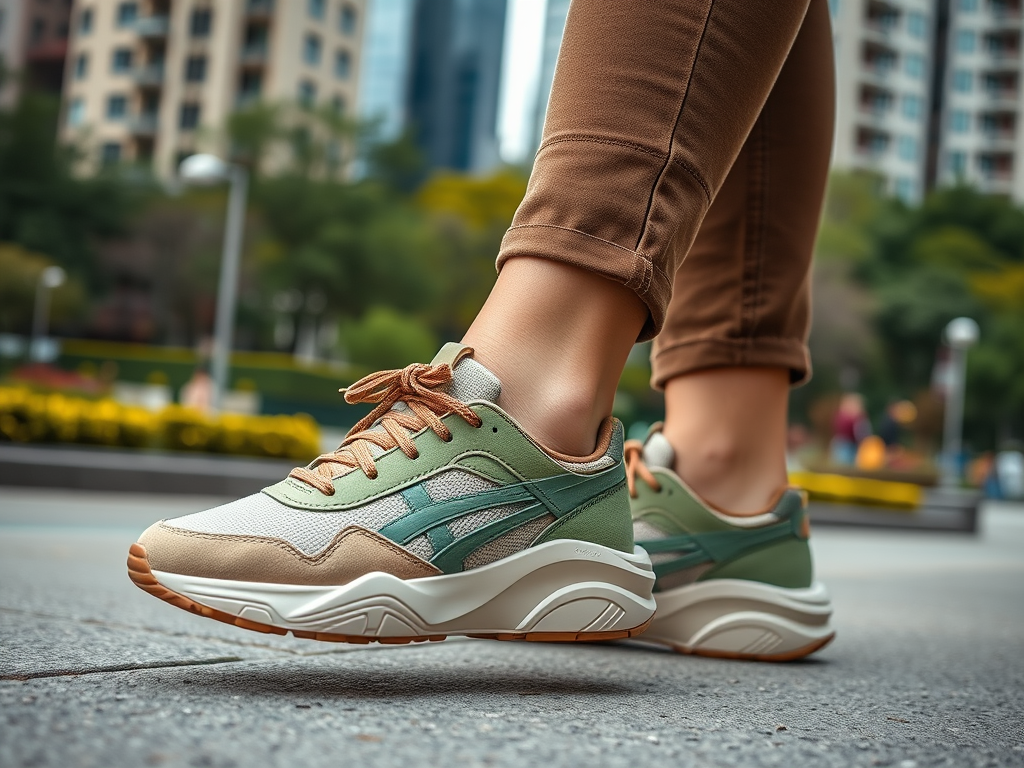As the world increasingly grapples with the impact of climate change and environmental degradation, consumers are turning their attention to sustainable fashion. Among the various sustainable products proliferating in the market, women’s sustainable sneakers have emerged as a significant player. These sneakers are not simply a trend; they represent a paradigm shift in how women approach footwear, merging style, comfort, and environmental responsibility. Understanding this evolution provides insight into the broader changes happening within the fashion industry and consumer preferences. The journey of sustainable sneakers reflects a deepening recognition of the importance of environmental stewardship while also emphasizing personal expression through footwear. In this article, we will track the evolution of these sneakers, highlighting key innovations, influential brands, and the future landscape of sustainable footwear for women.
The Early Days of Sustainable Sneakers

The quest for sustainability in sneaker production began modestly, with early adopters focusing on materials that had less environmental impact. Brands started to experiment with organic materials and eco-friendly manufacturing processes. In the 1980s and 1990s, a small number of pioneering labels began to introduce sneakers made from recycled materials. These initial forays laid the groundwork for what would become a much larger movement in the coming decades. Efforts to implement organic cotton, natural rubber, and repurposed plastics slowly transitioned from niche to more mainstream applications.
The Impact of Environmental Awareness in Fashion

The 1990s and early 2000s marked a crucial turning point as environmental awareness surged. A series of high-profile environmental disasters and growing public concern catalyzed a movement towards eco-conscious consumerism. Activists and organizations began to advocate for sustainable practices within the fashion industry, leading to a rise in demand for ethical and eco-friendly products. Women, often the primary consumers of footwear, began to assess not only the aesthetics but also the environmental implications of their choices. This shift culminated in a vibrant conversation about fashion’s role in society and the persistent push for brands to adopt sustainable practices. The result was an increased momentum that propelled more brands to focus on sustainability.
Materials Matter: A Shift Towards Eco-Friendly Fabrics
One of the most significant aspects of sustainable sneakers is the materials used in their creation. Today, brands are increasingly utilizing innovative materials that reduce environmental impact while maintaining comfort and style. The following materials are now commonly used in sustainable sneaker production:
- Organic cotton
- Recycled plastics
- Natural rubber
These materials not only provide an eco-friendly alternative but also support the idea of circular fashion. Each type of material has its unique advantages. For instance, organic cotton is farmed without harmful chemicals, promoting healthy ecosystems, while recycled plastics help to reduce waste in landfills.
Furthermore, innovations in sustainable materials have prompted new manufacturing techniques, allowing brands to produce high-performance footwear with significantly lower carbon footprints. The surge in consumer interest has spurred companies to continue refining these materials and processes. As the industry evolves, it remains imperative that brands communicate transparently about their sourcing and manufacturing practices to empower consumers in making informed choices.
| Material | Benefits |
|---|---|
| Organic Cotton | Pesticide-free, promotes biodiversity |
| Recycled Plastics | Reduces waste, less energy-intensive production |
| Natural Rubber | Biodegradable, sustainable sourcing practices |
Design Trends and Consumer Preferences
As sustainable sneakers gained traction, women’s preferences began to significantly influence design trends. Reflective of broader lifestyle changes, the demand for minimalist, functional designs surged in the marketplace. These designs not only embodied sustainability but also catered to a woman’s modern, active lifestyle, allowing for versatility across various settings. In addition to aesthetics, consumers began prioritizing comfort, leading brands to innovate by integrating supportive technologies into their sustainable offerings.
A few key design trends emerged that showcased this evolution:
- Utilitarian aesthetics
- Bold color palettes with earthy tones
- Incorporation of natural textures
Case Studies: Notable Brands Leading the Charge
Several brands have stood out in the realm of sustainable footwear. Each has taken unique approaches to sustainability, from innovative materials to ethical labor practices.
- Brand 1: This brand emphasizes transparency and sustainability, with models made from recycled ocean plastics that have gained immense popularity.
- Brand 2: Known for its cutting-edge technology, this brand has made strides in incorporating plant-based materials into footwear designs, pushing the envelope in sustainable sneaker innovation.
Each of these brands embodies a commitment to sustainability that not only reflects current consumer demand but also paves the way for future innovations in the industry.
Success Stories
Women have begun to share their personal stories of choosing sustainable sneakers, highlighting the positive impact these choices have had on their lives. Many appreciate the intersection of style and responsibility that these sneakers provide. When consumers choose sustainable options, they often feel empowered, knowing they are contributing to a larger cause.
The Future of Women’s Sustainable Sneakers
As we look ahead, the trajectory of women’s sustainable sneakers appears promising. Future trends indicate an ongoing emphasis on innovation, with brands likely to embrace new technologies such as bio-fabricated materials and enhanced recycling processes. Predictions suggest that as awareness grows among consumers, the demand for ethically produced, stylish footwear will expand, leading to even greater market growth. It’s exciting to consider how these advancements will transform the fashion landscape while encouraging responsible consumerism. As a result, brands will be under increasing pressure to be transparent about their practices and present consumers with authentic options.
Conclusion
The evolution of women’s sustainable sneakers is more than just a trend; it signifies a shifting landscape in how consumers approach fashion. From the early days of eco-conscious designs to the innovative approaches of today, these sneakers are emblematic of a societal shift towards sustainability. By prioritizing eco-friendly practices, brands are not only appealing to consumers but also paving the way for a more responsible fashion industry. It’s essential for consumers to remain informed and intentional about their choices, as the future of fashion will increasingly depend on the commitment to sustainability. Ultimately, the journey of these sneakers exemplifies the potential for positive change in the fashion industry, reflecting our collective responsibility towards the planet.
Frequently Asked Questions
- What are sustainable sneakers made from? Sustainable sneakers can be made from materials such as organic cotton, recycled plastics, and natural rubber, focusing on reducing environmental impact.
- Why should I choose sustainable sneakers? Choosing sustainable sneakers supports environmentally friendly practices, reduces waste, and often aligns with ethical labor practices.
- How can I tell if a sneaker is sustainable? Look for certifications, transparency about materials and manufacturing processes, and commitment to eco-friendly practices from the brand.
- Are sustainable sneakers more expensive? While sustainable sneakers may have a higher upfront cost, they often offer durability and longevity, making them a cost-effective choice over time.
- Where can I buy women’s sustainable sneakers? Many brands sell their sustainable sneakers directly on their websites, as well as through eco-focused retailers and boutiques.
